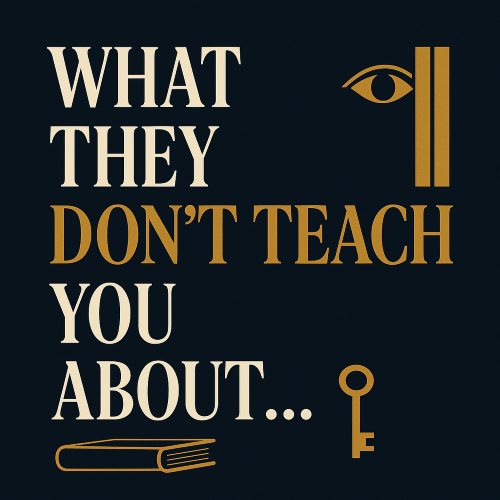What they don’t teach you about how the Left-Right divide began during the French Revolution.

The origins of the political Left-Right divide, a fundamental organizing principle of modern politics, are deeply rooted in the French Revolution.
What is often not taught is how this simple seating arrangement in a legislative assembly came to represent a profound ideological chasm that would define political discourse for centuries.
The divide was not merely a matter of geography but a reflection of a deep-seated disagreement over the very nature of government, society, and the rights of the individual.
The Seating Arrangement of the National Assembly
The Left-Right divide began, quite literally, with a seating arrangement in the National Constituent Assembly of 1789. The assembly was tasked with drafting a new constitution after the revolution had overthrown the French monarchy. When it came time to debate the king's power and the future of France, a practical decision was made that would have lasting symbolic significance:
-
To the right of the President's chair sat the supporters of the monarchy and the ancien régime. This group, often referred to as the aristocrats or monarchists, wished to conserve the power of the king, the Church, and the nobility. They believed in a hierarchical society and were deeply skeptical of radical change.
-
To the left of the President's chair sat the supporters of the revolution and the new republic. This group, made up of the Jacobins, republicans, and other revolutionaries, advocated for a complete break with the past. They sought to expand democracy, limit the power of the aristocracy and the Church, and empower the common people.
This physical separation, born of a need for order, quickly became a shorthand for ideological opposition. The terms "Left" and "Right" entered the political lexicon, carrying with them the core principles of revolution versus conservation.
The Ideological Foundations of the Divide
The physical seating arrangement was merely a symptom of a much deeper philosophical split. The French Revolution forced a confrontation between two competing visions of society that still resonate today.
The Right: Order, Tradition, and Hierarchy
The Right, as articulated by thinkers like Edmund Burke, believed in a society that was organic, traditional, and hierarchical.
-
Skepticism of Abstract Reason: They were deeply skeptical of the revolutionary belief that society could be remade overnight based on abstract principles of liberty and equality. They argued that a society's institutions—the monarchy, the Church, and the nobility—were the result of centuries of gradual, evolutionary change. To tear them down was to invite chaos and anarchy.
-
Emphasis on Order and Authority: The Right prioritized social order and stability over radical liberty. They believed that a strong authority, whether a king or a powerful government, was necessary to prevent society from dissolving into a state of nature.
-
Defense of Established Institutions: They saw the Church and the monarchy not just as political institutions but as vital pillars of morality and social cohesion. Their defense of these institutions was a defense of the entire social and political order they represented.
The Left: Liberty, Equality, and Progress
The Left, led by the Jacobins and other radical republicans, championed a vision of a new society built on the principles of the Enlightenment.
-
Belief in Reason and Abstract Rights: They believed that human beings were rational and that society could be perfected through reason. They championed the "natural rights" of man, as outlined in documents like the Declaration of the Rights of Man and of the Citizen.
-
Emphasis on Equality and Popular Sovereignty: The Left believed in popular sovereignty, the idea that political power resides with the people. They sought to dismantle the inherited privileges of the aristocracy and the clergy and to create a more egalitarian society.
-
Rejection of Tradition: They saw tradition not as a source of wisdom but as a source of oppression and superstition. They were willing to use revolutionary violence to sweep away the old order and create a new one based on liberty, equality, and fraternity.
The Lasting Legacy of the Divide
The Left-Right divide that began in the French Assembly has been exported around the world, though its specific meaning has evolved in different contexts.
-
Economic Dimensions: In the 19th and 20th centuries, the divide came to be defined more by economic issues. The Left became associated with socialism, communism, and the call for greater economic equality and state intervention in the economy. The Right became associated with capitalism, free markets, and the protection of private property.
-
Social and Cultural Dimensions: In the late 20th century, the divide shifted to include social and cultural issues. The Left became the champion of civil rights, environmentalism, and a more inclusive view of national identity. The Right became the defender of traditional values, national sovereignty, and law and order.
In conclusion, the Left-Right political spectrum is not a timeless or natural division. It is a historical construct born from the specific circumstances of the French Revolution. It represents a fundamental, ongoing tension between two competing visions of society: one that values order, tradition, and hierarchy, and another that champions liberty, equality, and progress. Understanding its origins is key to understanding the ideological battles that continue to shape our world.
- Questions and Answers
- Opinion
- Motivational and Inspiring Story
- Technology
- Live and Let live
- Focus
- Geopolitics
- Military-Arms/Equipment
- Güvenlik
- Economy/Economic
- Beasts of Nations
- Machine Tools-The “Mother Industry”
- Art
- Causes
- Crafts
- Dance
- Drinks
- Film/Movie
- Fitness
- Food
- Oyunlar
- Gardening
- Health
- Home
- Literature
- Music
- Networking
- Other
- Party
- Religion
- Shopping
- Sports
- Theater
- Health and Wellness
- News
- Culture

